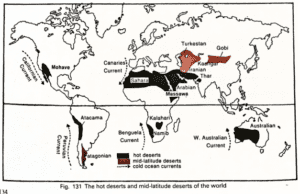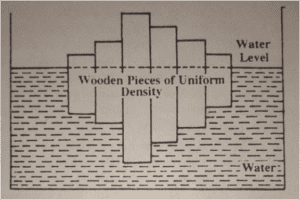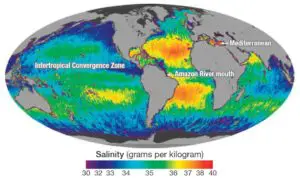Table of Contents
The Indian Railways: An Overview of the 18 Railway Zones
The Indian Railways is one of the largest railway networks in the world, connecting millions of people and transporting goods across the country. To efficiently manage and operate this vast network, the Indian Railways is divided into 18 railway zones. Each zone has its own administrative and operational responsibilities, ensuring smooth functioning of the railways within their respective regions. Let’s take a closer look at these 18 Indian Railways zones.
1. Northern Railway (NR)
As the name suggests, Northern Railway covers the northern regions of India, including states like Jammu & Kashmir, Punjab, Haryana, Uttar Pradesh, and parts of Rajasthan. Its headquarter is located in New Delhi.
2. North Eastern Railway (NER)
The North Eastern Railway zone serves the north-eastern states of India, including Bihar, Uttar Pradesh, Uttarakhand, and parts of Madhya Pradesh. Its headquarter is located in Gorakhpur.
3. Northeast Frontier Railway (NFR)
Covering the easternmost part of India, the Northeast Frontier Railway zone extends to the northeastern states of Assam, Arunachal Pradesh, Nagaland, Manipur, Mizoram, Tripura, and parts of Bihar and West Bengal. Its headquarter is located in Guwahati.
4. Eastern Railway (ER)
Eastern Railway zone covers the eastern parts of India, including West Bengal, Bihar, and Jharkhand. Its headquarter is located in Kolkata.
5. South Eastern Railway (SER)
The South Eastern Railway zone serves the southeastern regions of India, including West Bengal, Jharkhand, and parts of Odisha. Its headquarter is located in Kolkata.
6. South Central Railway (SCR)
South Central Railway zone covers the central and southern parts of India, including Andhra Pradesh, Telangana, Maharashtra, and parts of Karnataka and Tamil Nadu. Its headquarter is located in Secunderabad.
7. Southern Railway (SR)
Southern Railway zone extends to the southern states of India, including Tamil Nadu, Kerala, Puducherry, and parts of Andhra Pradesh and Karnataka. Its headquarter is located in Chennai.
8. Central Railway (CR)
Central Railway zone covers the central parts of India, including Maharashtra and parts of Madhya Pradesh and Karnataka. Its headquarter is located in Mumbai.
9. Western Railway (WR)
Western Railway zone serves the western regions of India, including Maharashtra, Gujarat, and parts of Rajasthan and Madhya Pradesh. Its headquarter is located in Mumbai.
10. South Western Railway (SWR)
The South Western Railway zone covers the southwestern parts of India, including Karnataka and parts of Maharashtra and Tamil Nadu. Its headquarter is located in Hubballi.
11. North Western Railway (NWR)
North Western Railway zone serves the northwestern regions of India, including Rajasthan, Punjab, and parts of Gujarat and Haryana. Its headquarter is located in Jaipur.
12. West Central Railway (WCR)
West Central Railway zone covers the central parts of India, including Madhya Pradesh and parts of Rajasthan and Maharashtra. Its headquarter is located in Jabalpur.
13. North Central Railway (NCR)
North Central Railway zone serves the central regions of India, including parts of Uttar Pradesh and Madhya Pradesh. Its headquarter is located in Prayagraj (formerly Allahabad).
14. East Central Railway (ECR)
East Central Railway zone covers the eastern and central parts of India, including Bihar and parts of Jharkhand and Uttar Pradesh. Its headquarter is located in Hajipur.
15. South East Central Railway (SECR)
The South East Central Railway zone serves the southeastern regions of India, including parts of Chhattisgarh, Odisha, and Maharashtra. Its headquarter is located in Bilaspur.
16. East Coast Railway (ECoR)
East Coast Railway zone covers the eastern coastal regions of India, including Odisha and parts of Andhra Pradesh. Its headquarter is located in Bhubaneswar.
17. Konkan Railway (KR)
The Konkan Railway is a separate entity from the Indian Railways. It covers the Konkan region of Maharashtra, including areas like Mumbai, Goa, and Mangalore.
18. Metro Railway, Kolkata
Metro Railway in Kolkata is another separate entity that operates the metro rail system in the city.
The significance of dividing the Indian Railways into zones is to ensure better management, efficient operations, and focused development of each region. It allows for a decentralized approach in decision-making, resource allocation, and service delivery.
Some of the key features of these railway zones include:
- Headquarters: Each zone has its own administrative headquarters, which serve as the central control and coordination centers for that particular zone.
- Divisional Offices: Within each zone, there are divisional offices responsible for managing and operating the railways at a more local level.
- Railway Infrastructure: The zones are responsible for the maintenance, expansion, and development of railway tracks, stations, signaling systems, and other infrastructure within their respective regions.
- Train Operations: The zones manage the scheduling, routing, and operation of trains within their regions, ensuring smooth movement of passengers and freight.
The objectives of having multiple railway zones in India are:
- Efficient Management: Dividing the Indian Railways into zones allows for better management and coordination of resources, services, and operations.
- Focused Development: Each zone can focus on the specific needs and requirements of its region, leading to targeted development and improvement.
- Effective Administration: The zonal structure enables effective administration and decision-making at the local level, leading to quicker responses and solutions to problems.
- Regional Connectivity: Railway zones contribute to better connectivity within their regions, enabling easier travel and transportation for people and goods.
The division of the Indian Railways into zones has had several effects:
- Improved Operations: The zonal structure has led to improved operations, better utilization of resources, and increased efficiency in the Indian Railways.
- Regional Development: Each zone has been able to focus on the specific needs and development of its region, resulting in improved infrastructure and services.
- Employment Generation: The railway zones have created employment opportunities in various regions, contributing to local economic growth.
- Connectivity and Mobility: Dividing the Indian Railways into zones has enhanced connectivity and mobility, making travel and transportation more accessible and convenient for people.
While the division of the Indian Railways into zones has several advantages, there are also some potential disadvantages or challenges. These may include:
- Coordination Issues: With multiple zones, coordination between them and the central authority can sometimes be challenging, leading to delays or inefficiencies.
- Inter-zonal Disparities: There may be variations in development and services across different zones, creating inequalities in access and facilities for passengers.
- Infrastructure Maintenance: In some cases, maintenance and infrastructure development may be neglected or delayed due to resource constraints or administrative issues.
Fun Fact: Did you know that the Indian Railways operates the longest railway line in the world? The Vivek Express, running from Dibrugarh in Assam to Kanyakumari in Tamil Nadu, covers a distance of over 4,263 kilometers!
In conclusion, the 18 railway zones of the Indian Railways play a crucial role in managing and operating the vast railway network across India. They ensure efficient administration, focused development, and improved connectivity within their respective regions. While there are some challenges associated with the zonal structure, the overall impact of dividing the Indian Railways into zones has been positive, leading to enhanced services, development, and mobility for millions of people.
Sources:
For more information, you can visit the official website of the Indian Railways at indianrailways.gov.in.

Mutiple Choice Questions
1. How many railway zones are there in India?
a) 12
b) 15
c) 18
d) 21
Explanation: According to the provided information, there are 18 railway zones in India.
2. Which is the largest railway network in the world?
a) Indian Railways
b) Chinese Railways
c) Russian Railways
d) American Railways
Explanation: The Indian Railways is mentioned as one of the largest railway networks in the world.
3. Which zone of Indian Railways is responsible for managing the railway infrastructure and services in Kolkata?
a) Northern Railway (NR)
b) Metro Railway, Kolkata
c) Eastern Railway (ER)
d) South Eastern Railway (SER)
Explanation: Metro Railway, Kolkata is mentioned as a separate zone responsible for managing the railway infrastructure and services in Kolkata.
4. Which zone of Indian Railways is responsible for managing the railway infrastructure and services in Mumbai?
a) Western Railway (WR)
b) Central Railway (CR)
c) South Western Railway (SWR)
d) Konkan Railway (KR)
Explanation: Western Railway, according to the provided information, is responsible for managing the railway infrastructure and services in Mumbai.
5. How many zones of Indian Railways have “Central” in their name?
a) 1
b) 2
c) 3
d) 4
Explanation: According to the provided information, there is one zone with “Central” in its name, which is the Central Railway (CR).
6. Which is the southernmost zone of Indian Railways?
a) Southern Railway (SR)
b) South Central Railway (SCR)
c) South Western Railway (SWR)
d) South East Central Railway (SECR)
Explanation: Southern Railway is mentioned as the southernmost zone of Indian Railways.
7. Which zone of Indian Railways is responsible for managing the railway infrastructure and services in Delhi?
a) Northern Railway (NR)
b) North Eastern Railway (NER)
c) Northeast Frontier Railway (NFR)
d) East Central Railway (ECR)
Explanation: Northern Railway, according to the provided information, is responsible for managing the railway infrastructure and services in Delhi.
8. Which zone of Indian Railways is responsible for managing the railway infrastructure and services in Chennai?
a) Southern Railway (SR)
b) South Eastern Railway (SER)
c) South Western Railway (SWR)
d) East Coast Railway (ECoR)
Explanation: Southern Railway, according to the provided information, is responsible for managing the railway infrastructure and services in Chennai.
Brief Summary | UPSC – IAS
As of January 2022, there are 18 railway zones in the Indian Railways, which is one of the largest railway networks in the world. Each zone is responsible for managing and operating the railway infrastructure and services within its defined geographical region. The 18 zones include Northern Railway, Eastern Railway, Southern Railway, Western Railway, Central Railway, and others. The Konkan Railway Corporation is a separate entity from the Indian Railways. For more information, visit the Indian Railways’ official website.



